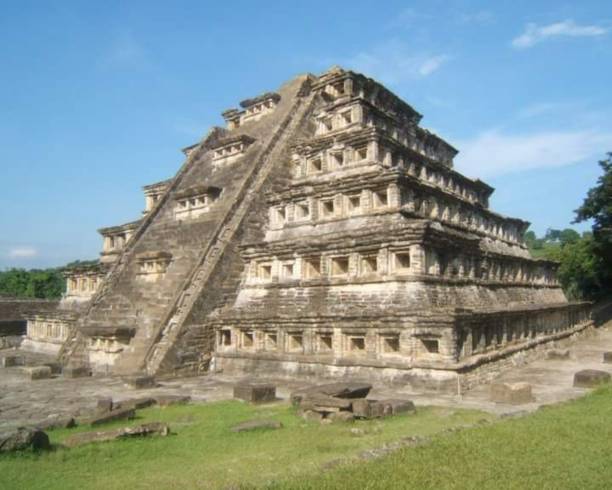El Tajín: A Complete Tour Guide
Introduction
El Tajín is one of Mexico’s most important archaeological sites, steeped in ancient history and a true testament to the legacy of the Totonac civilization. Located in the heart of the lush jungles of Veracruz, it is a destination that beckons travelers who seek to immerse themselves in the mysteries of ancient cultures, architectural wonders and vibrant traditions
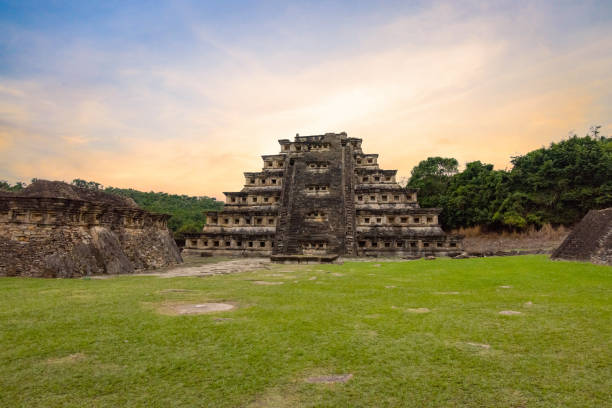
In this guide, we’ll tell you everything you need to know to get the most out of your trip to El Tajin, from the historical background to how to get there and what to see. .
The History of El Tajín
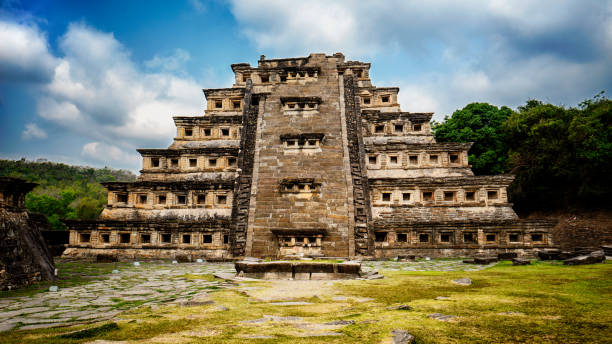
Origins of the Site
Al Tajin’s history stretches back to around 800 AD, and the city continued to flourish until the 12th century. This ancient site served as the capital of the Totonac civilization, which thrived on trade and agriculture. Ultajan was not only a center of economic development but also a center of religious and cultural activities. Its influence spread far and wide, as evidenced by its unique architectural style, which differs from Maya and Aztec traditions.
The Totonac People
The Totonac people, who built El Tajín, were very advanced in their understanding of astronomy, architecture and agriculture. They worshiped a number of deities, including the rain god, who was prone to both drought and heavy rains in the region. The Totonacs are also known for their unique cultural expressions, such as the Voladores de Papantla ritual, where performers “fly” from tall poles in a ceremonial dance.
The Decline of El Tajín
The decline of El Tajin began in the 12th century due to internal conflicts and the eventual rise of the Aztec Empire. While the city’s influence waned, its architectural achievements, including the niche pyramids, have stood the test of time.
How to Get to El Tajín
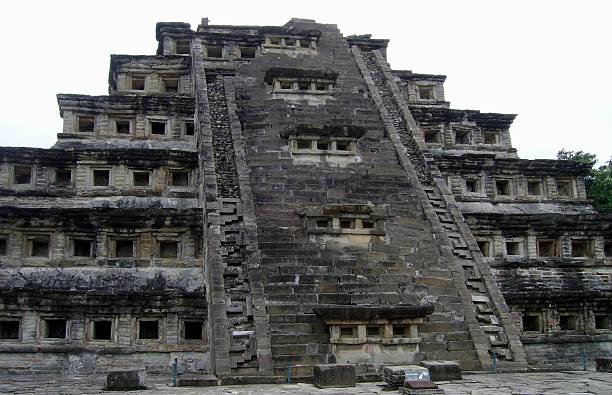
By Air
The nearest airport to El Tajín is El Tajín National Airport located in Poza Rica. From here, it’s a relatively short trip to the archaeological site, making air travel one of the fastest options for international visitors.
By Road
Travelers can also reach El Tajin by car or bus. The site is located 250 km from the city of Veracruz. Buses from major cities like Mexico City, Puebla, and Veracruz frequently serve Poza Rica and Papantla, making it easy to plan a road trip.
Guided Tours
Opting for a guided tour can enhance your experience, as many operators offer day trips from nearby cities, including transportation and expert guides who can explain the historical and cultural significance of the site.
Key Attractions at El Tajín
Pyramid of the Niches
El Tajin’s crown jewel is the Pyramid of the Niches, a six-tiered structure adorned with 365 niches, symbolizing the days of the solar year. The pyramid is not only an architectural marvel, but also a testament to Totonac’s advanced understanding of astronomy.
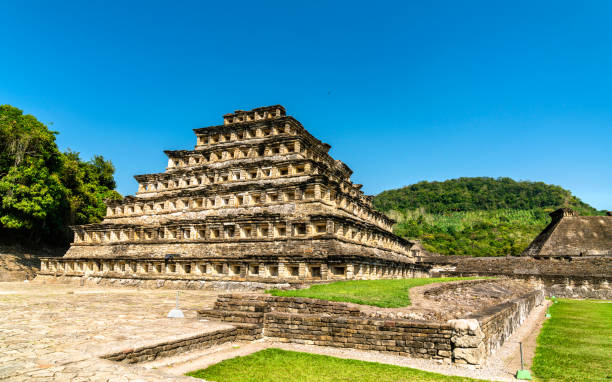
Plaza del Arroyo
This plaza is one of the central courtyards where the Totonacs held important ceremonies and gatherings. It offers a glimpse into the social and religious life of the ancient city, surrounding buildings that were used for political and administrative purposes.
The South Ballcourt
The ancient ball game played here had deep religious significance, symbolizing the battle between day and night, good and evil. The South Ballcourt contains elaborate carvings depicting the ceremonial games that once took place here.
The North Ballcourt
The North Ballcourt is equally fascinating, with frescoes and bas-reliefs depicting mythological scenes, offering an insight into the spiritual life of the Teutonic people.
The Art and Architecture of El Tajín
Unique Totonac Design
El Tajin has a distinct architectural style. The Totonacs used intricate geometric patterns and reliefs in their buildings, creating a style distinct from other Mesoamerican cultures.
Frescoes and Reliefs
Many of the walls of Al Tajin are decorated with frescoes and bas-reliefs depicting scenes from mythology and everyday life. These artistic works not only beautify the structure but also provide valuable insight into the beliefs and customs of the culture.
Best Time to Visit El Tajín
Weather Conditions
The best time to visit El Tajín is during the dry season, from November to March, when temperatures are cooler and there’s less rainfall. Summers can be hot and humid, and the rainy season from June to October can make exploration more challenging.
The Cumbre Tajín Festival
The Cambrai Tajin Festival, held in March, is a celebration of
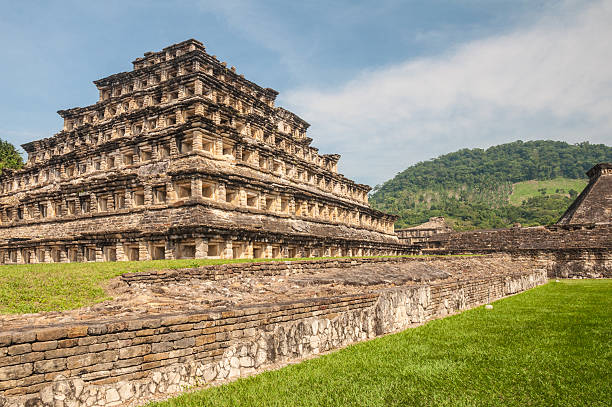
culture, featuring traditional dance, music and food. Visiting during this time allows travelers to experience the vibrant living culture that still thrives in the region.
Practical Tips for Visiting El Tajín
What to Bring
When visiting El Tajin, wear comfortable walking shoes, bring plenty of water, and wear sunscreen. The site is large, and most of it faces the sun, so being prepared will ensure a more comfortable experience.
Accessibility Information
Although parts of the site may be difficult for visitors with mobility issues due to uneven terrain, efforts have been made to improve accessibility. Contact the Visitor Center for more detailed information.
Entry Fees and Hours of Operation
Al Tajin is open daily from 9am to 5pm. The entrance fee is usually around 85 pesos, but prices can vary. It is advisable to check before your visit.
Where to Stay Near El Tajín
Cultural Experiences at El Tajín
The Voladores de Papantla
One of the most interesting cultural experiences in El Tajín is witnessing the Voladores de Papantla. In this ancient Totonac ceremony, four men climb a tall pole and “fly” to the ground while swinging around it on long ropes. The ritual, which is said to honor the gods and bring rain, is both mesmerizing and symbolic. This is an essential event that reflects the enduring traditions of the Totonac people.
Traditional Totonac Ceremonies
In addition to Valladolids, the area around El Tajin is rich in traditional events and festivals. Many of them are linked to agricultural cycles, paying homage to gods of fertility, rain and harvest. If you visit at certain times of the year, particularly during the Cambrai Tajin Festival, you’ll have the chance to witness these events for yourself.
Responsible Tourism at El Tajín
Protecting the Site
As a UNESCO World Heritage Site, Al Tajin has been protected for its cultural and historical significance. While visiting, it is important to follow these guidelines that help preserve the structure and environment. Avoid climbing over ruins, and stick to specific paths to avoid damaging fragile areas. Always take your trash with you to keep the site pristine for future visitors.
Supporting Local Communities
Responsible tourism also includes supporting local communities around El Tajin. Consider buying crafts, foods and services directly from local vendors. This not only helps sustain the economy, but also keeps traditional Totonac crafts and practices alive. Many artisans sell handcrafted items such as pottery, textiles and jewelry that make unique and meaningful gifts.
Day Trips from El Tajín
Visit to Papantla
Just a short drive from El Tajín, Papantla is a charming town known for its vanilla production and its deep-rooted Totonac culture. Spend a day exploring the town’s colorful streets, visiting vanilla markets, and learning about the town’s role in preserving Totonac traditions. The Church of Our Lady of the Assumption, located in the town centre, is also worth a visit for its historical significance.
Exploring Poza Rica
Poza Rica, a large town about 30 km from El Tajin, is another great option for a day trip. Known as a hub for oil production, the city has modern amenities, restaurants and hotels, making it a convenient base for travelers. You can also explore nearby beaches or visit ecological parks in the area.
Conclusion
El Tajín is a fascinating destination that takes you back in time to one of the most important periods in Mesoamerican history. From its awe-inspiring pyramids and ball courts to its intricate art and timeless cultural practices, this site offers an amazing experience for travelers who appreciate history, culture and architecture. Whether you’re exploring the niche pyramids, witnessing the Voladores de Papantla, or sampling traditional Totonac cuisine, El Tajín promises an unforgettable adventure.
FAQ
How long should I spend at El Tajín?
A typical visit to Al Tajin can take around 3 to 4 hours. This gives you plenty of time to explore the main attractions such as the pyramids and ball courts, as well as take in the surrounding scenery and learn about the history of the site. If you’re planning to visit nearby cities or experience cultural performances, you’ll want to set aside a full day.
Is El Tajín accessible for families?
Are guided tours available at El Tajín?

